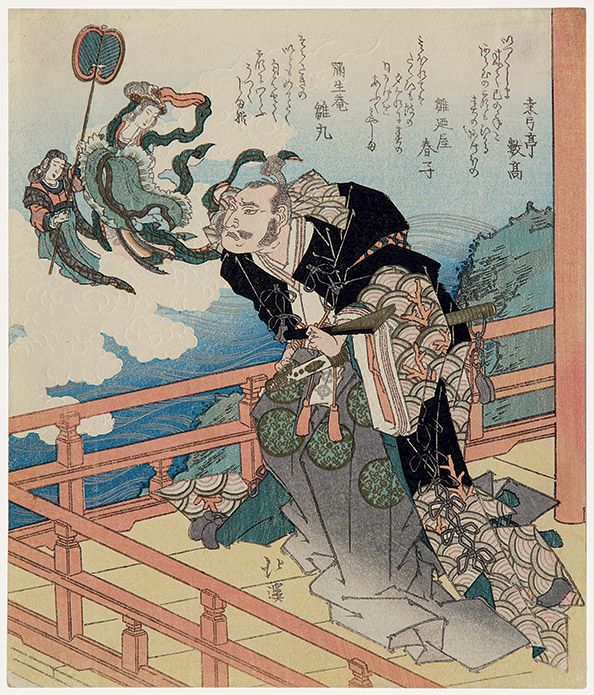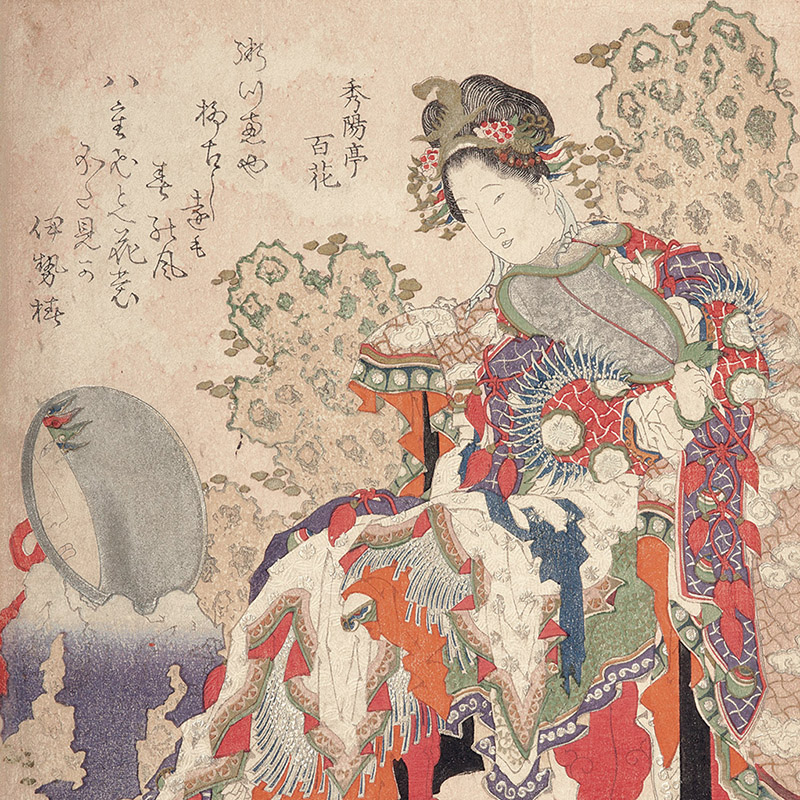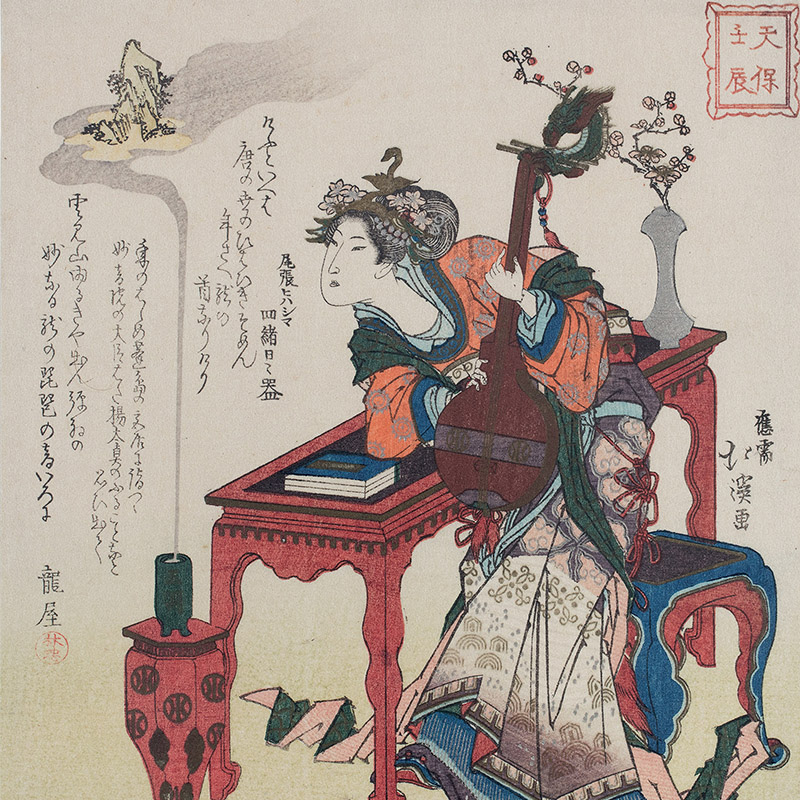Totoya Hokkey
1780 - 1850
Shikishiban surimono, 212 x 181 mm
Signed: Hokkei
Fine impression, with karazuri, metallic print and burnished black. Fine colour and condition.
The poems are by Raikyutei Kazutaka, Hinanoya Shunshi/Haruku and Yayopian Hinamaru.
The surimono depicts Kiyomori, of the Taira clan, at the Itsukushima shrine, while the Goddess Benten appears to him. The warlord Taira no Kiyomori rebuilt at his expenses the shrine in 1168. In the print Benten, the Goddess of arts and her assistant float on gauffraged clouds; silver sparks the waves below.
Other impressions of the surimono are at the Harvard Art Museums (1933.4.1917)
and at the Museum of Fine Arts, Boston (accession number 11.21074).
Another one, from the Fogg Museum, is reproduced in: Surimono, Prints by Elbow, by Edythe Polster and Alfred H. Marks, Washington 1980; cat. no. 177.
Information on the master
Hokkei began his work as a fishmonger but quickly became one of Hokusai's best students, specializing in surimono and illustrated books. His name "Totoya" literally "fishmonger" indicates a plebeian origin, but he soon entered the workshop of the painter Yōsen'in of the Kanō school (1753-1808). From 1799 he actively worked alongside his master Hokusai and from 1810 c. he became a surimono draftsman revealing an acute sense of humor and employing very refined techniques. He actively worked on the composition of the first 'manga' volumes of the master and towards the late 1820s, after Shunman's death and after Hokusai ceased to accept surimono commissions from poetic circles, Hokkei with Gakutei became the most important and sought-after surimono designers. Hokkei cultivated a cultured and refined clientele composed of samurai, intellectuals and scholars.
Other works of the master


